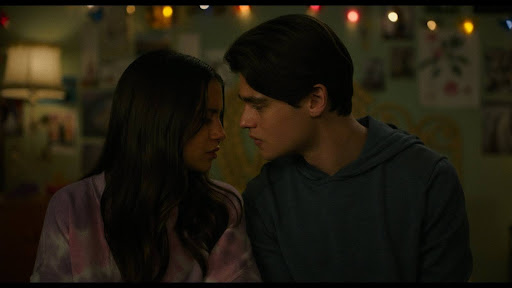The recent film adaptation of “Turtles All the Way Down” is a better adaptation than it is a film.
For the bookish among us, it makes a teen feel like a teen to crack open a John Green book. While these novels don’t necessarily capture what it really means to be a teenager, they overflow with drama and dialogue that is witty to a “Fault.” They’re over-the-top enough to provide an escape, yet grounded enough to be emotionally cathartic. I have read six of Green’s eight books, and I find “Turtles” the most compelling by far.
The first time I read “Turtles” (per Managing Editor Jordan Balousek’s recommendation), I voraciously consumed it over the course of a day. It is heartfelt, but it is by far Green’s least sentimental, most disturbing book. The engrossing story chronicles high schooler Aza Holmes’ struggle with obsessive-compulsive disorder (OCD), combining elements of mystery and romance while centering her battle with mental illness.
The adaptation essentially eliminates any sense of mystery, structuring the narrative as a tug-of-war between the romance and Aza’s struggle with OCD. While these elements of the film’s narrative affect each other, they often feel weirdly separate. Maybe that is the point, trying to separate experiencing mental illness from the possibilities for those living with it.
Director Hannah Marks has designed an impressively elegant vehicle for empathy, separating Aza’s OCD as the antagonist from Aza as the protagonist. I was uncertain how the moments that center Aza’s OCD would translate to film given how deeply personal it is. However, the use of strong visual language alongside voiceover is generally effective, particularly in the scenes that depict Aza consuming hand sanitizer because of her fear of getting an infection.
That said, for a story so beautifully introspective and small, it tries to be bigger than it is, both in its world-building and style. Rather than enriching the narrative from the source material, the creative team often attempts to create an experience so visceral that it loses a sense of thoughtfulness. For instance, the opening scene establishes Aza’s obsession with bacteria utilizing repulsive imagery, but the film’s perspective is detached from Aza’s, failing to fully immerse viewers.
While I appreciate that the filmmakers do not strive to make the story more palatable, it doesn’t translate particularly smoothly to film, and it is thus less emotionally cathartic than the novel. I enjoyed “Turtles,” but as someone who identifies as more of a film buff than a reader, it saddens me to say that if someone were to ask me about it, my response would be “read the book.”









